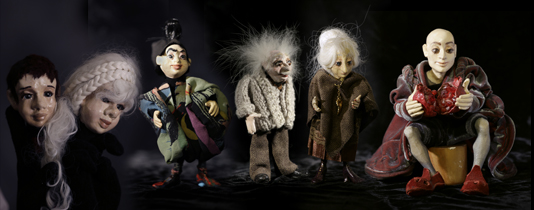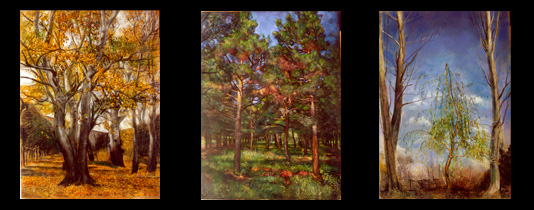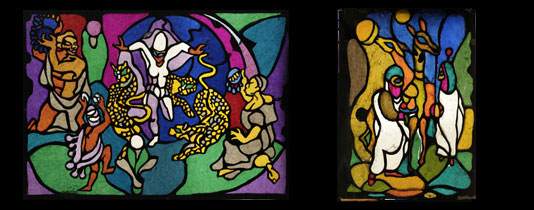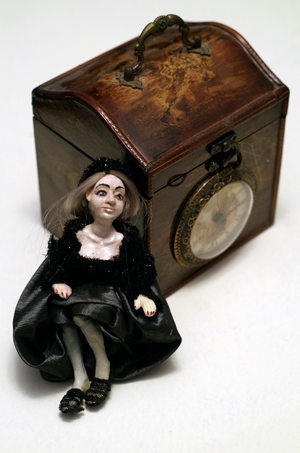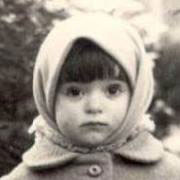 My name is Ana Gabriadze and I was born in Tbilisi, on April 3, 1968.
My name is Ana Gabriadze and I was born in Tbilisi, on April 3, 1968.
I used to live in the Old Town of Tbilisi until I was seven. A long narrow street where I lived used to be called "vodovoznaya", as they carried water for sale through that street. We had a rectangle room with large windows through which you could see brownish-red wall of bricks with occasional grey stones. Holes left by missing stones were filled with moss that spread over to the brick wall. The house belonged to an Armenian merchant before the Revolution, until it was taken away from him and divided into several apartments where many different people moved in.
The central part of the house was the so-called Italian yard - a stage of the house. A Kurd janitor and a loader named Abas lived in the basement. Rumor had it that he used to lift a grand piano with his bare hands. I though that his wife Zoze was the most beautiful woman in the world. Abaz had taken her away from her first husband and made her his wife. He treated her like a queen. Zoze was a woman with dark skin-tone and extremely refined hands like those of a sculpture. She used to wear many bracelets and necklaces; you could see gold balls shining near her ears. She used to wear traditional clothes made of silk and velvet, and many colorful dresses... she looked like a bird of paradise (or a firebird).
A labyrinth of narrow streets led you to the Opera House from our house. My heart stops every time I think of that place – the beauty of colorful stained glass windows, huge chandelier, soft cushioned burgundy chairs, gold and blue ornaments on the walls. A magical purple acacia used to grow inside the yard of the Opera House. I was very little when I saw works of a Tbilisi-based artist Grigorian, nicknamed Joto, which made an indelible impression on me. I could feel amazing warmth coming from his drawings: dark brown, crimson and dark red, deep shadows. They were not just drawings – they were paintings, so I was told.
That was the moment I realized that the most beautiful woman was dark-skinned Zoze (and because she was so beautiful, she was abducted for marriage) and the most intelligent and respectable man was Paliashvili (my grandmother used to take me to his square for a walk).
That was the moment I realized the power of painting.
I had my first “exhibition” in 1974 (I’m still not sure if anyone noticed my works). My mother used to take me to the Blue Gallery in rainy weather. One day I found myself at a group exposition of Georgian sculptures (including Iakob Nikoladze). The following day I asked my mom to take me to the exposition again: with me I brought a plasticine figure that I had molded myself and put it next to a large sculpture.
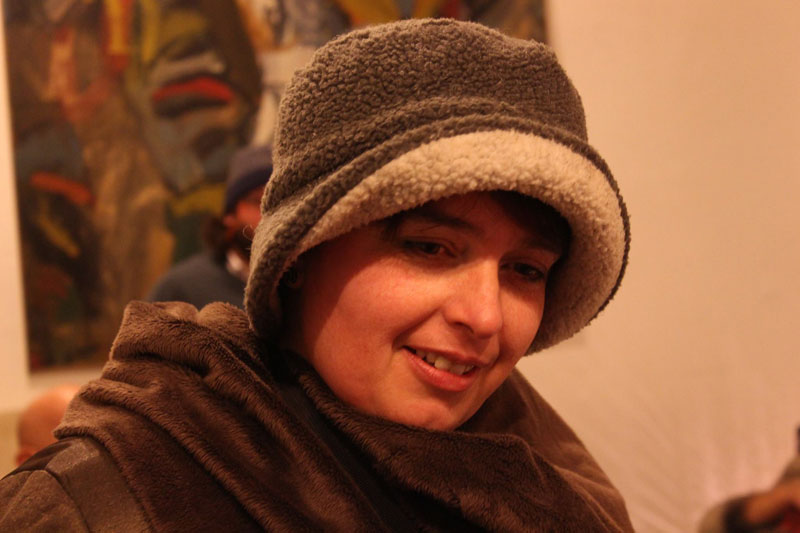 1974-1983 – School no.35
1974-1983 – School no.35
I loved modeling back then, especially with a candle wax: as candle was burning and melting, I was trying to mold small figures out of it. If I needed more wax, I would pour a melted candle over my figure and move it through a flame: it became round and glossy.
I am still very grateful for my first painting teacher Guguli Kurdiani.
• In 1983-1987 I went to I.Nikoladze Art School
• In 1098-1994 I went to Tbilisi State Academy, department of painting. I was very lucky to have Ira Beghanishvili and Zurab Nizharadze as teachers.
• After graduating I created my own art studio for children and worked there from 1994 to 2010. I could have never imagined that working with children can be so productive, not only for children but for artist as well because children’s work is a great source of inspiration.
Dighomi Forest
My paintings were able to save the trees that I had painted
I was 7 years old when we moved to a new place. Our new house stood on the edge of a huge forest, on the very last street of Tbilisi. It was a dark forest and everyone was scared to go there, except for me. I used to work on plein air for hours in the forest.
Unfortunately, the government did not protect the forest and sold it in plots for development. I was standing there painting trees, while the forest around me was destroyed.
I had my personal exhibition named Dighomi Forest at Orient Gallery in 2002.
In 2003 I held another exhibition at TMS Gallery with a cause – Save Dighomi Forest. As a result, they stopped the construction and took down everything that had already been built. My civic activism was very unexpected - I used to go to the forest to paint not knowing that those very paintings would became the way for me to protect that forest.
 And everyone met at the ball...
And everyone met at the ball...
In 2010-2011 I worked on a collection of dolls.
I started working on dolls by accident. Because I wanted to have a unique Christmas tree, I decided to make my own decorations but instead, I ended up making dolls. First I made clowns, later ladies, hunters, donkeys, jokers, a queen and a king and rest of the palace inhabitants – a prince and a princess, a chef and other servants. I also made contemporary characters of Tbilisi and a final character – a drunken poet, who is dreaming about it all. These dolls are very small and they live on a two-story shelf. The upper shelf is occupied by contemporary heroes, while the bottom shelf is hosting the King’s ball. I presented the project in 2011 and the dolls were given to Tbilisi Museum of Dolls. Businessman Giorgi Tsivtsivadze donated the collection of dolls named Poet’s Dream (total of 45 dolls) to Tbilisi Museum of Dolls.
Exhibitions
In 1994 I participated in a group exposition at Orient Gallery, in autumn and spring exhibitions at the National Art Gallery in Tbilisi, in Janashia Museum, and had my personal exhibition at Tbilisi Museum of History.
In 1995 I participated in exhibitions organized by Orient Gallery, called Retro and Art of Georgia.
In 1996 I participated in spring and autumn exhibitions at the National Art Gallery in Tbilisi.
In April 1997, September 1998 and June 1999 my personal exhibitions were hosted at the U.S. Embassy in Georgia.
In 2002 I had a personal exhibition at Orient Gallery.
In 2003 I had another personal exhibition at TMS Gallery.
I organized children’s exhibitions at Hobby Gallery in 2000, at Caucasian House in 2002 and at New Art Gallery in 2003.
In 2011 I presented my collection of dolls, later donated to Tbilisi Museum of Dolls (total of 45 dolls).
In 2009-2015 my works were exhibited at galleries Baia and Vanda.
My works are in private collections in the U.S., Japan, France, Germany, Russia and Georgia.
Article:
http://www.24hours.ge/weekend/story/34920-ana-gabriadze-metojine-qali



